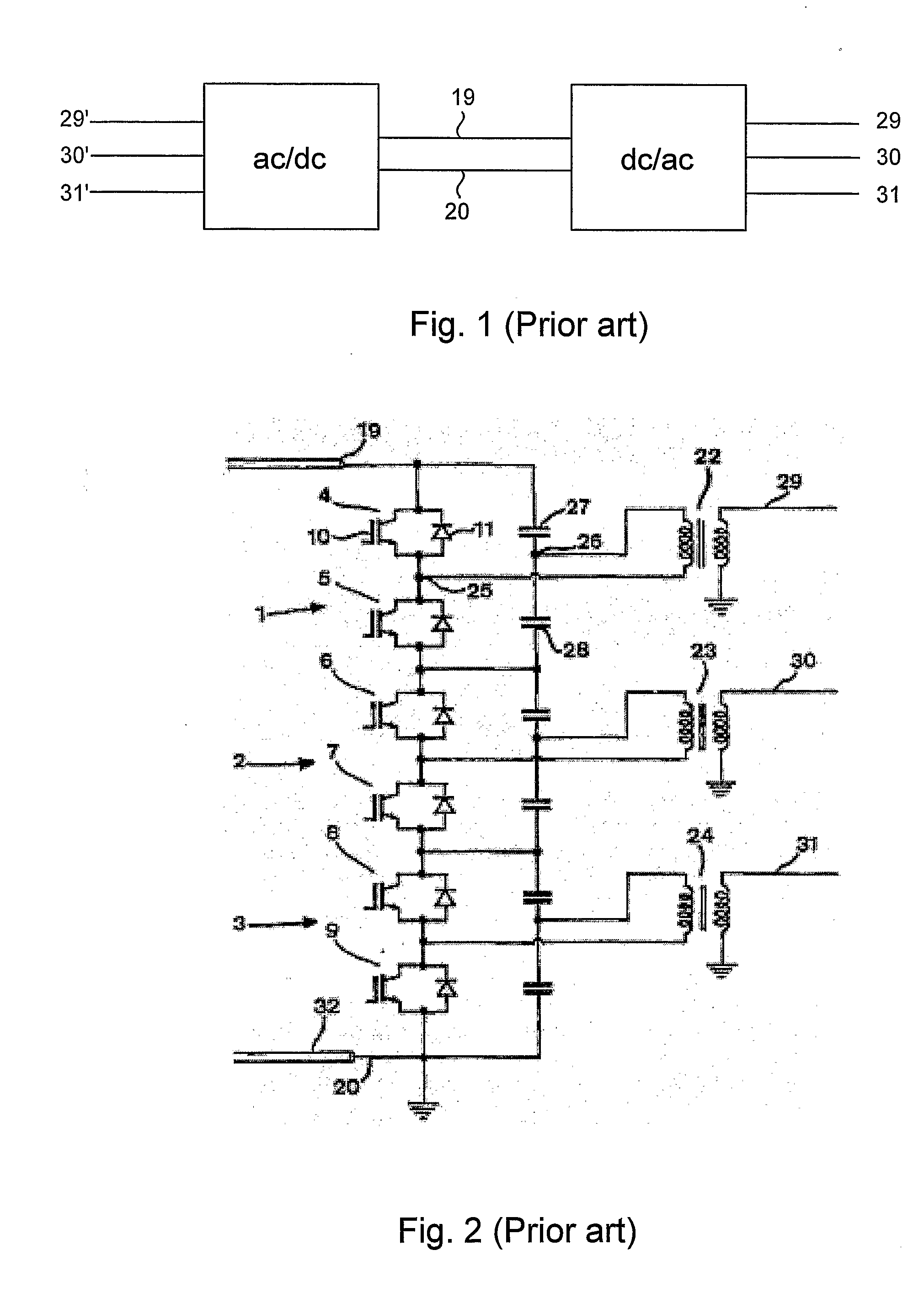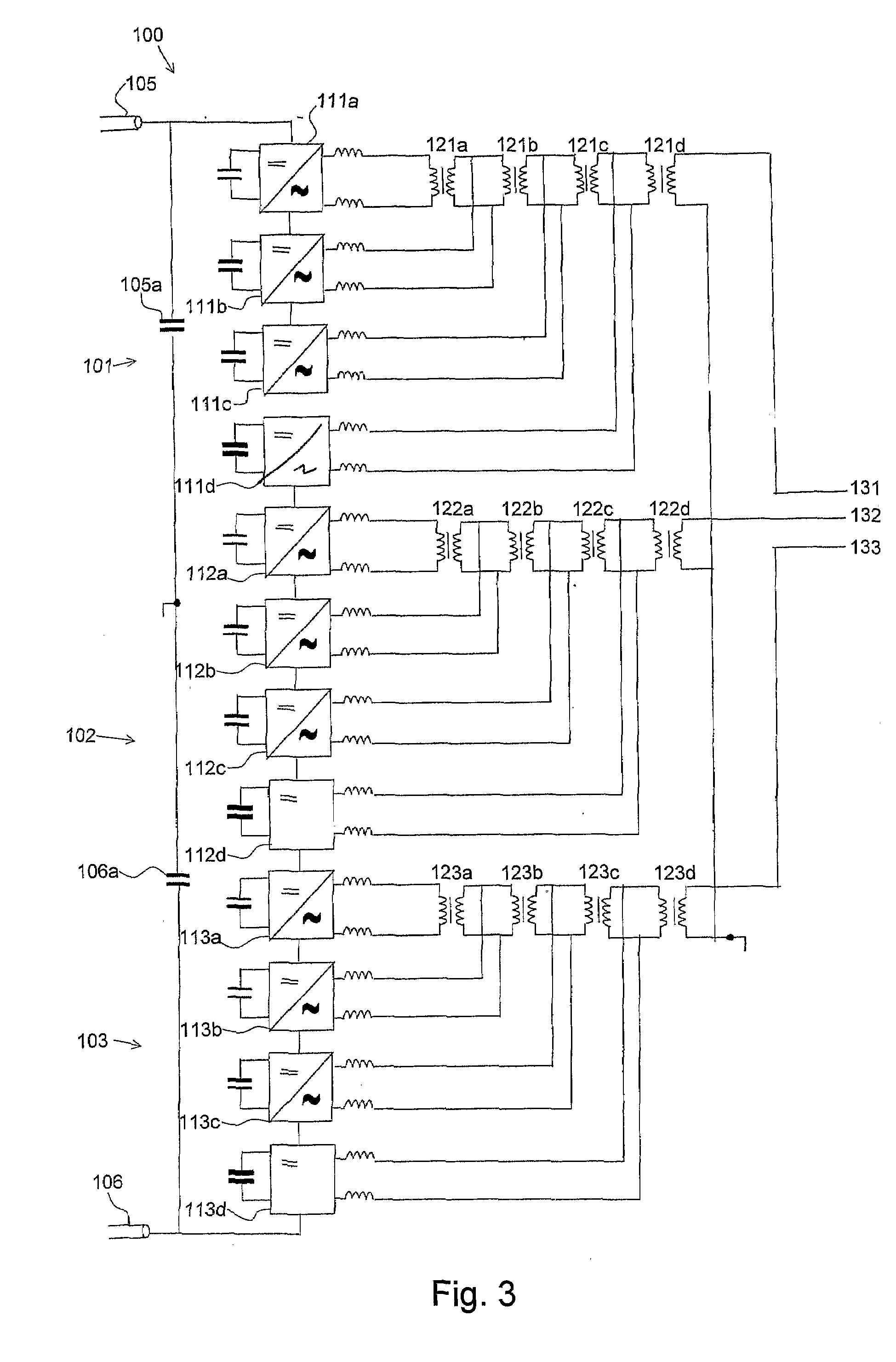Voltage source converter and method of controlling a voltage source converter
a voltage source converter and voltage source technology, applied in the direction of power conversion systems, dc source parallel operation, conversion with reversal, etc., can solve the problems of insufficient blockage voltage requirements of semiconductor switching devices of the turn-off type (i, igbts), valves will experience either conduction losses or switching losses repetitively, and achieve the effect of reducing the requirements on individual components
- Summary
- Abstract
- Description
- Claims
- Application Information
AI Technical Summary
Benefits of technology
Problems solved by technology
Method used
Image
Examples
first embodiment
[0026]FIG. 3 shows an overall diagram of a VSC converter according to the invention. It is in some aspects similar to the prior art converter shown in FIG. 2. Thus, three phase legs 101, 102, 103 are connected in series between two pole conductors 105, 106 of a direct voltage network. More specifically, one end of the first phase leg 101 is connected to the positive pole conductor 105 and one end of the third phase leg 103 is connected to the negative pole conductor 106. The second phase leg 102 is interconnected between the first and third phase legs. Thus, the opposite ends of the series connection formed by an outer end of a respective outer phase leg of the series connection are connected to a respective pole conductor 105, 106.
[0027]Each phase leg 101-103 comprises four power conversion stages 111a-d-113a-d, respectively. These conversion stages can be conventional half- or full bridge power converters. Capacitors and inductors are connected to the conversion stages in order to...
fourth embodiment
[0040]In a fourth embodiment shown in FIG. 6, a VCS converter according to the invention is identical to the converter shown in FIG. 5 with the exception that it comprises conversion stages which are full bridge converters instead of half bridge converters.
[0041]In all the described embodiments, pulse width modulation (PWM) is applied. Three sinusoidal waveforms are compared with triangular carrier waveforms. The triangular carriers can be mutually phase shifted in order to achieve harmonic elimination.
[0042]In the upper portion of FIG. 6, sinusoidal and triangular voltages are shown. The resulting PWM voltage is plotted in the lower portion of the same figure.
[0043]FIG. 7 shows in the upper diagram a time graph of the converter voltage with a pulse width modulation. In the lower diagram phase currents are shown.
[0044]Preferred embodiments of a voltage source converter according to the invention have been described. A person skilled in the art realizes that these could be varied wit...
PUM
 Login to View More
Login to View More Abstract
Description
Claims
Application Information
 Login to View More
Login to View More - R&D
- Intellectual Property
- Life Sciences
- Materials
- Tech Scout
- Unparalleled Data Quality
- Higher Quality Content
- 60% Fewer Hallucinations
Browse by: Latest US Patents, China's latest patents, Technical Efficacy Thesaurus, Application Domain, Technology Topic, Popular Technical Reports.
© 2025 PatSnap. All rights reserved.Legal|Privacy policy|Modern Slavery Act Transparency Statement|Sitemap|About US| Contact US: help@patsnap.com



